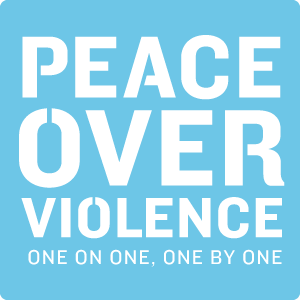The Cycle of Violence and Power and Control
The cycle of violence is a pattern of behaviors which keeps survivors locked in the abusive relationship.
Understanding the cycle of violence is crucial in stopping relationship violence as well as in answering the most common questions regarding battering.
There are three stages to the cycle of violence:
- First is the tension building phase. In this phase, the batterer gets edgy and tension begins to build up. This is where the battered person may feel like they are walking on eggshells.
- Second is the actual explosion phase where the physical abuse occurs. It can last from a few minutes to several hours.
- Third is the honeymoon phase. The perpetrator may be sorry or act like nothing happened; but is still interested in making up and may even promise never to do it again. However, the tension almost always starts to build again, thus continuing the cycle.
A survivor of domestic abuse does not need to experience physical abuse to be abused.
Often the psychological abuse can leave someone feeling fearful, helpless and powerless to act on their own behalf. People affected by domestic violence are rich, poor, married, divorced or single, from all ethnic backgrounds and economic levels. They can be able-bodied or with a disability, heterosexual or homosexual, gay, lesbian, bisexual and/or transgender. As someone affected by domestic violence and battering they will find that they have common issues with many others who have also experienced this type of violence.
The Power & Control diagram is a particularly helpful tool in understanding the overall pattern of abusive and violent behaviors, which are used by a batterer to establish and maintain control over their partner. Very often, one or more violent incidents are accompanied by an array of these other types of abuse. They are less easily identified, yet firmly establish a pattern of intimidation and control in the relationship.
Power & Control Wheel
EMOTINAL ABUSE
Putting her down or making her feel bad about herself, calling her names, making her think she’s crazy, and mind games.
ECONOMIC ABUSE
Trying to keep her from getting or keeping a job, making her ask for money, giving her an allowance, or taking her money.
SEXUAL ABUSE
Making her do sexual things against her will, physically attacking the sexual parts of her body, or treating her like a sex object.
USING CHILDREN
Making her feel guilty about the children, using the children to give messages, using visitation as a way to harass her.
THREATS
Making and/or carrying out threats to do something to hurt her emotionally, threaten to take the children, commit suicide, or report her to welfare.
USING MALE PRIVILEGE
Treating her like a servant, making all the “big” decisions, acting like the “master of the castle”
INTIMIDATION
Putting her in fear by using looks, actions, gestures, loud voice, smashing things, destroying her property.
ISOLATION
Controlling what she does, who she sees and talk to, where she goes.

